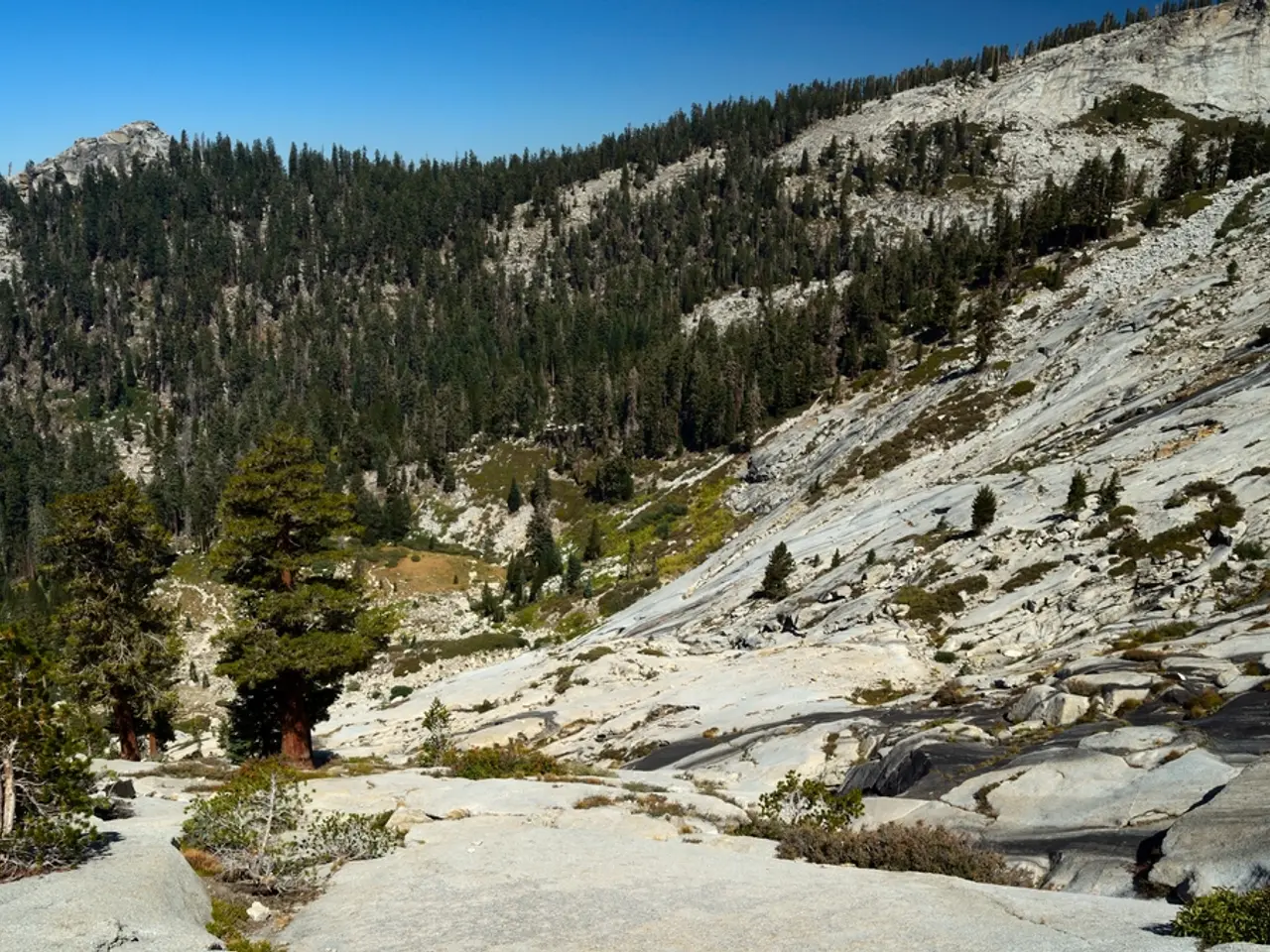Colorado's Ice Lake and Island Lake Trails: Comprehensive Hiking Guide
Hiking to Ice Lake and Island Lake: A Challenging yet Rewarding Journey
Nestled in the heart of the San Juan Mountains near Silverton, Colorado, lies a trail that promises breathtaking views and a test of endurance. The Ice Lake Trail, leading to both Ice Lake and Island Lake, is a popular choice for experienced hikers seeking a high-elevation alpine hike with varied terrain and stunning colorful landscapes.
The journey begins in a shaded forest, with a steady, uphill climb. The switchbacks start early on, preparing hikers for the challenging terrain ahead. Within the first 0.6 miles, hikers pass Clear Creek Falls, a picturesque waterfall that sets the tone for the day.
The trail's toughest part is approximately miles 1.3-1.9, where the trail is steep even with switchbacks. But don't let that deter you, for the rewards awaiting at the end are worth the effort. The trail features multiple alpine lakes, alpine tundra, and wildflowers, creating a landscape that is nothing short of spectacular.
After reaching Ice Lake, hikers can continue on to Island Lake, which is located just a short distance away. The trail to Island Lake has several sketchy stretches that are not recommended for beginner hikers, kids, or anyone afraid of heights or exposure. Hikers will need to do some rock hopping to cross the outlet stream from Ice Lake, and then continue uphill through a ridge hike and an elevation gain of 0.4 miles over 0.4 miles.
The trail continues through a massive meadow with streams and wildflowers, leading hikers to the Lower Basin, a wide, open area surrounded by peaks. The best time to see the famous colors of Island Lake is closer to midday. The final ascent to Upper Ice Lake begins at around 2.7 miles, where hikers are greeted by a pristine, bright blue colored lake that sits at approximately 12,280 feet.
To prepare for this hike, plan for a high-elevation alpine hike with moderate to strenuous ascent. The round-trip hikes to Ice Lake and Island Lake generally range from approximately 6 to 7 miles depending on exact route and side trips. Proper acclimatization to altitude is important to avoid altitude sickness, and starting early in the day is recommended to avoid afternoon thunderstorms common in the Colorado mountains in summer.
Recommended gear for this hike includes hiking boots with good ankle support for uneven rocky alpine terrain, trekking poles to help manage steep sections and loose rock, layered clothing including warm layers and waterproof shell, sun protection (hat, sunglasses, sunscreen), plenty of water and snacks, and a map or GPS since cell reception may be limited. Backcountry camping near Ice Lake is busy, and it's recommended to get there early to set up camp in a favorite spot. Camping lower in the basin is preferred over camping near Ice Lake due to the difficulty of the main ascent between the lower and upper Ice Lakes, lack of privacy and protection from the elements, and the unnecessary distance to carry backpacks.
In summary, the Ice Lake and Island Lake hike offers a challenging but rewarding alpine hiking experience with beautiful lake and mountain views. Preparation should emphasize acclimation, layered clothing, solid footwear, trekking poles, sun and weather protection, water, and navigation aids.
- Embarking on the Ice Lake Trail, a demanding, yet rewarding alpine hike in the San Juan Mountains, one will encounter varied terrain and vibrant landscapes.
- Preparation for this adventure includes acclimatization, proper gear such as hiking boots, trekking poles, and layered clothing, and an early start to avoid afternoon thunderstorms.
- As the trail progresses, hikers will find themselves traversing alpine trails, witnessing multiple alpine lakes, and exploring the wildflower-covered tundra.
- The challenging segments of the trail, like the steep terrain between miles 1.3-1.9 and the rocky stretches on the way to Island Lake, are reminiscent of the thrill one finds in adventure sports.
- Camping near Ice Lake can be a possibility, but setting up camp lower in the basin is recommended for better protection from the elements and a shorter distance to carry gear.
- This lifestyle intertwining travel, sports, and wildlife exploration promises an unforgettable experience, making it a must-do for ardent backpackers and hikers.




